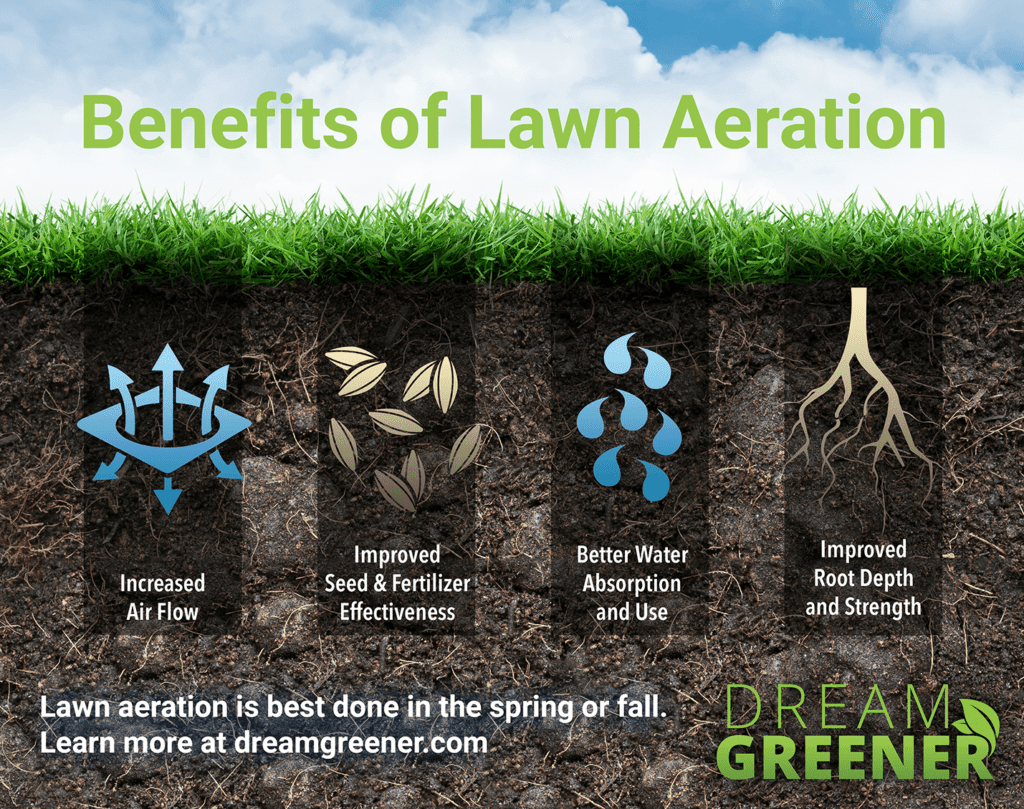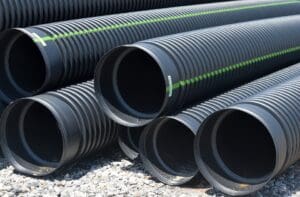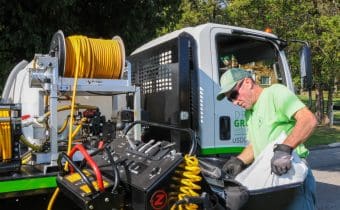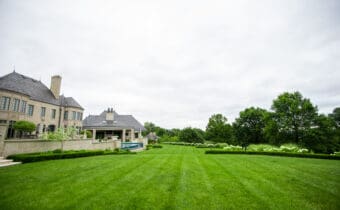All grasses belong to the Poaceae family which contains over 12,000 different species.
With a number that large, it’s helpful to break them into groups where the majority will be forages. But some will be edible – like wheat, barley, and rice, and some will be shrubs – like ornamental and fountain grasses, and even some take the form of trees – like bamboo!
Grass is so prevalent everywhere that most of the time we forget to stop and examine how awesome it is and the benefits it brings to humanity.
John James Ingalls talked about the miraculousness of grass when he said,
“Grass is the forgiveness of nature; her constant benediction…Forests decay, harvests perish, flowers vanish, but grass is immortal. It yields no fruit in earth or air, and yet should its harvest fail for a single year, famine would depopulate the earth. Grass softens the rude outline of the world. Its tenacious fibers hold the earth in its place. It invades the solitude of deserts, climbs the inaccessible slopes and forbidding pinnacles of mountains, modifies climates, and determines the history, character, and destiny of nations.”
The Unique Benefits of Grass
As a lawn care contractor, we specialize in turfgrass and growing lush, green lawns in Pittsburgh. It’s a beneficial role when you consider that “The front lawns of eight average houses have the cooling effect of about 70 tons of air conditioning, while the average home-size central air has only a 3.5 ton capacity.”

Grass cools us down, cleans the air, reduces noise pollution, and improves wellness on top of a host of other benefits – like giving us a place to play soccer with our friends.
Who doesn’t want to come home to a flawless and welcoming lawn? It will impress your family and friends alike—making your yard the coveted place for a barbecue or an afternoon in the sunshine.
Since grass does so much for us, we thought we’d do grass a favor and help prevent a few of the most common mistakes people make when trying to grow grass in their lawns.
Mistake #1: Inadequate Soil Preparation
In order to grow, seed needs to make direct contact with soil. By just throwing grass seed outside, it won’t germinate.
There are a few ways you can ensure seed to soil contact including raking and aerating. If you have a small trouble spot, like an area where a dog urinated, you can use a potato fork or a rake to dig up that area. Be sure to remove all the dead grass in that spot and get down to the soil level.
For larger areas, we recommend core aeration.
Core aeration is the process of taking small plugs out of densely compacted soil—i.e. your lawn after a long summer of enjoyment. The plugs are then deposited on the surface. After the plugs are pulled, grass seed can nestle in and find areas to sit back and start their growth process!
[Read More: Types of Summer Lawn Stress]
The benefits of aeration don’t stop there however.
Aeration also helps break down thatch – a layer of dead grass. A thick layer of thatch prevents the sunlight and water from reaching the roots of your grass. Allowing the thatch to break down into a thin cover, releases nutrients back to your soil, and is ideal for the growth of your grass.
The amount of moisture in your soil is important, because as you can imagine, pulling plugs of soil in dry conditions becomes difficult. We recommend watering your lawn thoroughly 3-5 days prior to aerating to ensure the tines on the machine can reach a depth of 2-3”.

Mistake #2: Seeding Improperly
Overseeding is the process of laying grass seeds on your lawn. Most lawn experts recommend seeding immediately after core aeration. Introducing grass seed to your lawn will make it fuller, greener, and more competitive against weeds in the coming growing season. You can enjoy watching your grass green up in the spring without having to worry about treating your lawn for weeds nearly as much as last year.
Though it sounds simple enough – lay down some seed – there are a few errors that people commonly make.
Applying seed at an incorrect rate
When you check a bag of seed, it will tell you the recommended rate to apply. This rate is calculated as “pounds of seed per thousand square feet of area”. Established lawns typically require 3-5 pounds whereas bare dirt may need 7 pounds. So, if your lawn is 10,000 square feet and the label recommends 5 pounds of seed per 1,000 square feet, you’d need to spread 50 pounds of seed. Most seed bags come in this size, but always account for trouble spots.
Not considering trouble spots
Trouble spots are areas that grass can’t consistently grow in. It may be best to try a different grass blend in that spot – such as a shade blend in the backyard under large, mature trees. You also may want to come back periodically and add more seed to those spots if they dry out easily.
Neglecting After Care
After the seed is spread, you don’t want to rake until the lawn is established. You could damage the root zone and pull up the baby seedlings. On the flip side, not removing the leaves could be just as hazardous as they can suffocate the seedlings. And considering that up to 90% of the weight of a grass plant is in its roots – we want to make sure that the foundation is strong.
Mistake #3: Over or Under Watering
 There’s only three ways you can water – over, under, or just right. Here’s a couple tricks when it comes to watering grass.
There’s only three ways you can water – over, under, or just right. Here’s a couple tricks when it comes to watering grass.
New Seedlings
- You don’t need to water immediately, but once you start watering, you must keep the soil moist at all times until the seedlings establish.
- The ground should be damp, but not soaking wet.
- There should not be so much water that there is runoff.
Established Lawns
- Water until the top 6-8 inches of soil is wet.
- Most lawns need 1 inch of water per week.
- Water in the morning, before 10:00AM.
- Check your watering schedule seasonally by using the screwdriver test or a soil probe.
[Read More: Watering Tips For Healthy Plants Year-Round]
Mistake #4: Improper Fertilization
Applying products to your lawn can be a scary undertaking if you’re not sure what you’re doing or haven’t had much experience with it. After all, over fertilizing can cause browned out burnt spots in your lawn and may be harmful to the environment. The number one rule is to always read the label. Here are few other rules of thumb to help guide you.
If you recently planted new grass seed, you should apply a seed starter fertilizer that will boost the new seedlings germinate faster and achieve maturity sooner. Then, late fall fertilization is beneficial for root development and will give your lawn an early spring green-up next season. We always recommend a slow-release fertilizer as they don’t need to be applied as often and tend to provide a more even-color green instead of striping.
Stay away from weed control after planting seedlings. Refer to the label, but we recommend not applying any more weed control for the rest of the season to allow the seedlings to do their thing.
[Read More: FAQ About Pittsburgh Lawns]
Mistake #5: Not Doing Your Homework
Any time you take on a project in your lawn or in your landscaping, it’s important to get accurate measurements and dimensions. This will allow you to get your seeding rate right, the fertilizer rate correct and save you from wasted time, wasted money, and poor results. Make sure you get proper measurements from the start, deducting your home, patios, walks and driveways.
 Even though you may do everything right – according to these guidelines, you may find that some areas simply won’t grow seed. The reasons could be poor soil or drainage, too much sun, too much shade, too much pet traffic, etc. Before you begin seeding, take these areas into account and check with an expert.
Even though you may do everything right – according to these guidelines, you may find that some areas simply won’t grow seed. The reasons could be poor soil or drainage, too much sun, too much shade, too much pet traffic, etc. Before you begin seeding, take these areas into account and check with an expert.
They may recommend starting with a pH test in these areas. Also consider the obvious fixes such as limbing up trees to allow more sunlight in, filling in a low spot with soil, or getting rid of your dog. (Just kidding! We love dogs!)
Overall, make the best use of your time when it comes to your lawn. If you choose the DIY aeration path – talk to your neighbors about renting an aerator on the same Saturday and splitting the cost. If not, reach out to a few pro’s and get their recommendations on your lawn.
Let us help!
Dream Greener offers a free lawn analysis where you can learn more about the type of lawn you have and the recommendations our experts suggest to have a lush carpet to walk on in with bare feet.



